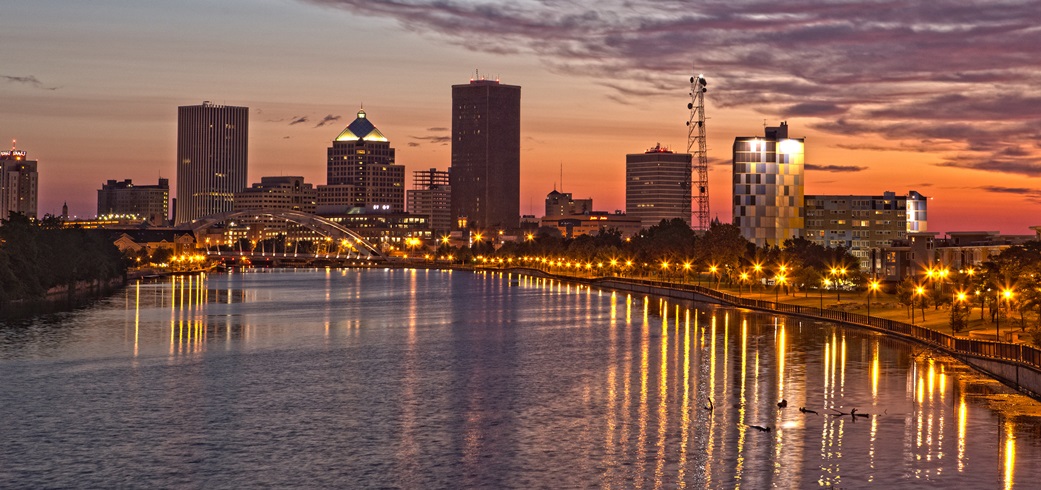Out of the 75 largest metropolitan areas in the U.S., Rochester, New York is the fourth-poorest.
As mayor of this aging, hardscrabble city perched on the chilly shores of Lake Ontario, Lovely Warren likes to keep her ear to the ground. She’s forever making cameos at community meetings, shaking hands with strangers on the street and chatting with neighbors from her grandfather’s wraparound front porch.
Now, as Warren embarks on her second term, she faces a city that appears to be in the early stages of recovery. Overall crime is down and certain sectors of the economy are starting to rebound, but the road ahead remains formidable. Some observers are beginning to express disillusionment over what they see as sluggish progress.
Warren’s defenders insist that the scale of her efforts requires time to produce results. To restore the city’s economic base and improve the quality of life for its working poor, Warren is seeking to re-engage the very residents that made Rochester a 20th century success story.
Rochester has seen some positive changes. Its storied educational and cultural institutions continue to lend structural support to the city’s civic life. Forbes ranked Rochester 36th on its 2017 list of cities creating the most tech jobs, 13 spots higher than the year before.
The National Center for Arts Research declared the Rochester metro area the 19th most vibrant arts community out of all large cities. The city is also home to a robust craft beer scene. Monroe County, of which Rochester is the seat, had three breweries in 2009 — today it has 21.
Moreover, though the city’s overall population is shrinking, its Millennial population is growing. Kent Gardner, chief economist at the locally-based consulting firm CGR, noted that Rochester’s sizable youth demographic is helping to fuel a downtown revival.
New residential development, paired with renovation projects like the transformation of Kodak’s historic headquarters into a multi-tenant business complex, is helping to regenerate the city’s core.
Once the epicenter of photography and film production, the sprawling 1,200 acres of the former Kodak campus in northwest Rochester now seeks to position itself as a focal point of the photonics industry.
And there’s more. Efforts underway to reinvigorate the park not only seek a larger and diverse mix of non-Kodak tenants, but also a more active performing arts theater, a new welcome center and other attractions, plus housing, offices and retail shops.
Plans call for selling off or leasing more than 50 acres of the park—mostly surface parking lots—in the coming years. Decades after a then-growing Kodak demolished entire blocks of the Maplewood neighborhood, Eastman Business Park operators have begun hosting private developers interested in building it back.
See article by Cassie Owens in Next City.
See Democrat & Chronicle article by Brian Sharp about Kodak redevelopment.


